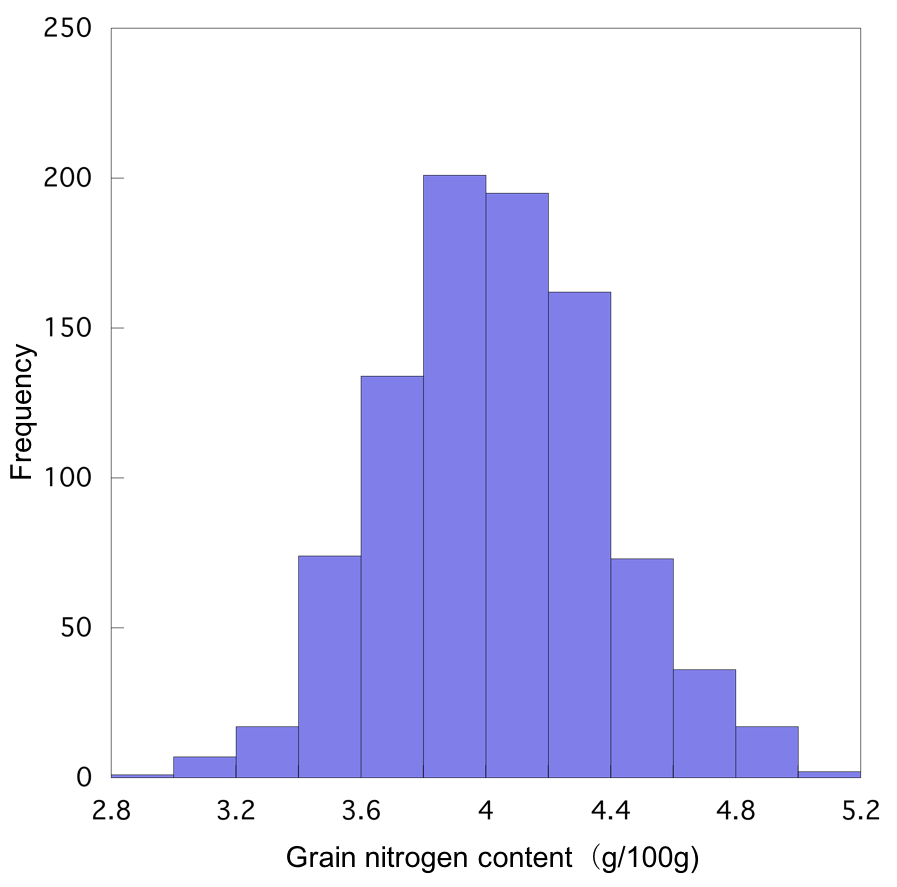Application of infrared spectroscopy for rapid prediction of crude protein content in cowpea (Vigna unguiculata ) grain
Description
Cowpea is a staple grain legume widely cultivated in Africa, playing key roles in the region as a food crop for the people and as an important cash income source for farmers. In addition to ongoing efforts toward improving crop productivity and insect-pest resistance, focus is also being placed on enhancing the grain quality and nutritional value of crops with multiple roles, especially cowpea, which serves as the primary source of protein in the region. Protein content is one of the most important grain quality traits, and significant protein content in grains can have a major impact on the livelihoods of people in the region. In this work, we focused on the crude protein content of grain as a primary nutritional property, and we developed a suitable prediction method that can be used in the breeding process and in evaluating environmental effects.
A total of 919 ground grain samples from 224 lines covering the genetic diversity in grain nitrogen content of the crop were used for the development of a calibration model to predict nitrogen content (Fig. 1). The developed infrared spectroscopy model using the actual nitrogen content obtained by the Dumas combustion method and the near-infrared (4000-4985cm-1) and mid-infrared (1400-2290 cm-1) spectroscopy obtained by Fourier Transform Infrared Spectrometer had reasonable accuracy (R2 = 0.91). The model also predicted the nitrogen contents of the grain samples grown in three agro-ecological zones across major cowpea-growing areas in West Africa with acceptable accuracy (R2 = 0.90-0.92) (Fig. 2 and Table 1). Obtained nitrogen contents can be accurately converted to crude protein content using a nitrogen-to-protein conversion factor of 5.45 developed for cowpea based on the relationship between amino acid composition and nitrogen content using 20 selected cowpea lines (Fig. 3). The developed method using infrared spectroscopy can predict crude protein content in cowpea grain in a time-effective manner (approx. 100 sec./sample) compared to the standard Dumas convection method (approx. 870 sec./ sample) including the time for sample loading.
The method’s cost- and time-effectiveness should enable cowpea breeders in West Africa to select potential parental materials and conduct effective breeding with a focus on grain protein content. Also, the method provides useful tools for field agronomic studies, which in turn should help us understand the environmental effects on grain protein content and allow further development of suitable cultivation techniques to produce quality cowpea grains in each region.
Figure, table
-
Fig. 1. Distribution of grain nitrogen content of the 224 lines used for the development of the model
-
Fig. 2. Validation of the developed model for determining the nitrogen content of grain samples collected from different agro-ecological zones in Ibadan, Minjibir and Toumnia
-
Table 1. Variation statistics of the developed model for predicting grain nitrogen content
-
Fig. 3. Relationship between actual protein content and nitrogen content of 20 selected cowpea lines
- Affiliation
-
Japan International Research Center for Agricultural Sciences Research Strategy Office
- Research project
- Program name
- Term of research
-
FY2016(FY2012~FY2020)
- Responsible researcher
-
Muranaka Satoru ( Research Strategy Office )
Shono Mariko ( Tropical Agriculture Research Front )
MIERUKA ID: 001790Ishikawa Haruki ( International Institute of Tropical Agriculture )
- ほか
- Japanese PDF
-
A4 524.95 KB
A3 249.47 KB
- English PDF
-
A4 662.58 KB
A3 598.65 KB
- Poster PDF
-
Poster 379.3 KB




